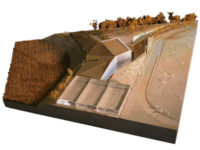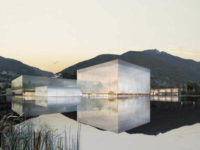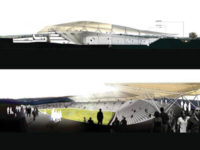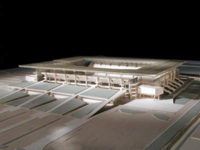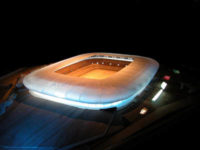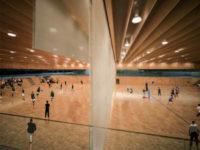A Policarbonate Riverbank
A sports centre in the form of a riverbank in Pieve di Soligo
It’s the year 2007. The most famous inhabitant of Pieve di Soligo, the poet and writer Andrea Zanzotto, nominated several times for the Nobel Prize, indignantly intervenes on the national newspapers with articles about destruction of the hilly landscape of Veneto surrounding Pieve di Soligo, a centre of twelve thousand inhabitants located between the Piave basin and the first mountain slopes, straddling the river of the same name, the Soligo.
Irritation increases when the administration decides to build a sports centre and a sports hall on the edge of the river, within the embankment that borders the bed of the Soligo. An unhappy and self-referential project that, as often happens with sports buildings, appears to be completely indifferent to the themes and values of the surrounding landscape.
Zanzotto thus undertakes a “battle to save that small piece of ancient floodplain” where the Soligo river “turns, meanders and digs various canyons”. All with such passion that governor of the Veneto, Giancarlo Galan, takes his side together with the mayor promising “that the sport centre is of the highest quality of architectural expression and in the relationship with the environment”.
Subsequently I am contacted, with their trust in my attitude toward “design places”.
We spent a lot of time visiting the area in order to understand and study this place and the Soligo river, which is the only symbol, the only track, able to hold together the suburbs, old town and surrounding landscape.
The river becomes the protagonist of the project with a “green bank” that borders the bed. An “inhabited embankment”, a simple, clear, unifying horizontal architecture, able to hold together the shattering of the surrounding building.
A single polycarbonate facade of almost two hundred metres and thirteen metres high. A “giant screen” that reflects the profiles of the surrounding hills and at dusk becomes an “urban lamp”, a translucent wall that breaks and articulates to form spaces at the service of sportsmen and all the inhabitants.
The new sports centre can become a reference point for the whole territory, an opportunity to enhance the entire river, with a pedestrian path and walkways on the water, which in a few minutes allows you to reach the historic centre.
A “sports park” to associate with a “literary park” in memory of Andrea Zanzotto, able to give some order to the urban suburbs.



























